Pop Culture
How the Medieval Tapestry in the New ‘House of the Dragon’ Opening Sequence Got Its Weave
The titles were created by design studio yU+co and inspired by the Bayeux Tapestry.
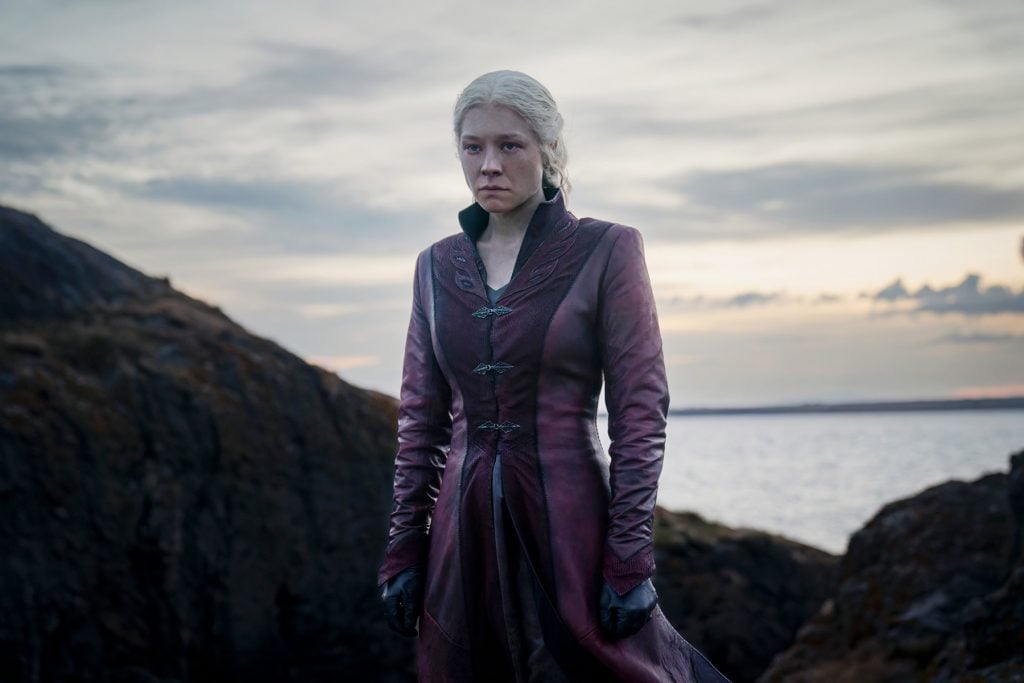
The Iron Throne is once again for the taking. Almost two years after its hit first season, House of the Dragon, the Game of Thrones prequel, has returned us to the political—and bloodthirsty—battle over who gets to rule Westeros. This time, a civil war is erupting between two factions of the Targaryen clan: one led by Rhaenyra Targaryen, the heir apparent to the throne; and the other by the Hightowers, who connived to usurp the throne by hastily crowning Queen Alicent’s son Aegon II king. “The path to victory now,” warned Otto Hightower in the season’s trailer, “is one of violence.”
This spat is just one of the many that have cropped up across centuries of Targaryen lore, as told by fantasy author George R. R. Martin in his celebrated run of novels, “A Song of Ice and Fire.” Alas, no series yet exists to cover that generations-spanning context—but the opening credits for House of the Dragon‘s second season makes a good stab at it in two minutes flat.
And how? With storytelling that unfolds across an intricately detailed tapestry. Backed by Ramin Djawadi’s iconic score, the titles feature a series of images being woven into a thick fabric, their animated threads linking various scenes in Targaryen history. We’re transported from the long-lost city of Valyria, the dynasty’s ancestral seat, to Aegon I Targaryen’s dragon-assisted flight to conquer Westeros, to the events of season one, when the house was divided under the rule of Viserys I.
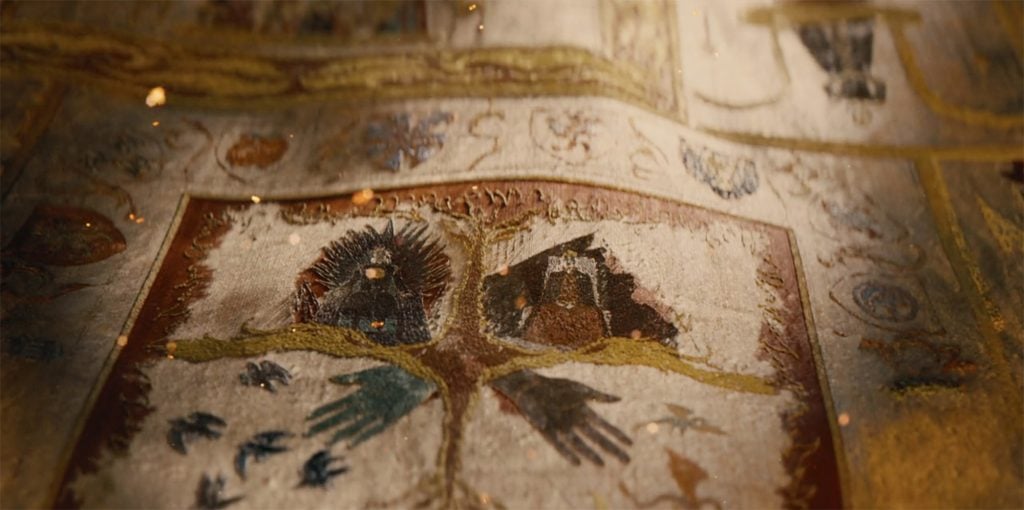
Opening credits for House of the Dragon, season two, by yU+co, depicting Aegon II on the Iron Throne and Rhaenyra Targaryen in Dragonstone. Photo: HBO.
Showrunner Ryan Condal conceived of a sequence based on a tapestry, telling the Hollywood Reporter: “A lot of what we know about medieval combat, about medieval dress and customs, comes from that sort of visual history.” It fell to Hollywood-based design agency yU+co to bring the titles to life over more than a year.
“Ryan and the team wanted something that was different from the first season because the ancestry story has been told,” Mulan Leong-Suzuki, designer at yU+co, explained over a video call. “So, we wanted to move into something that was more of a living history of that.”
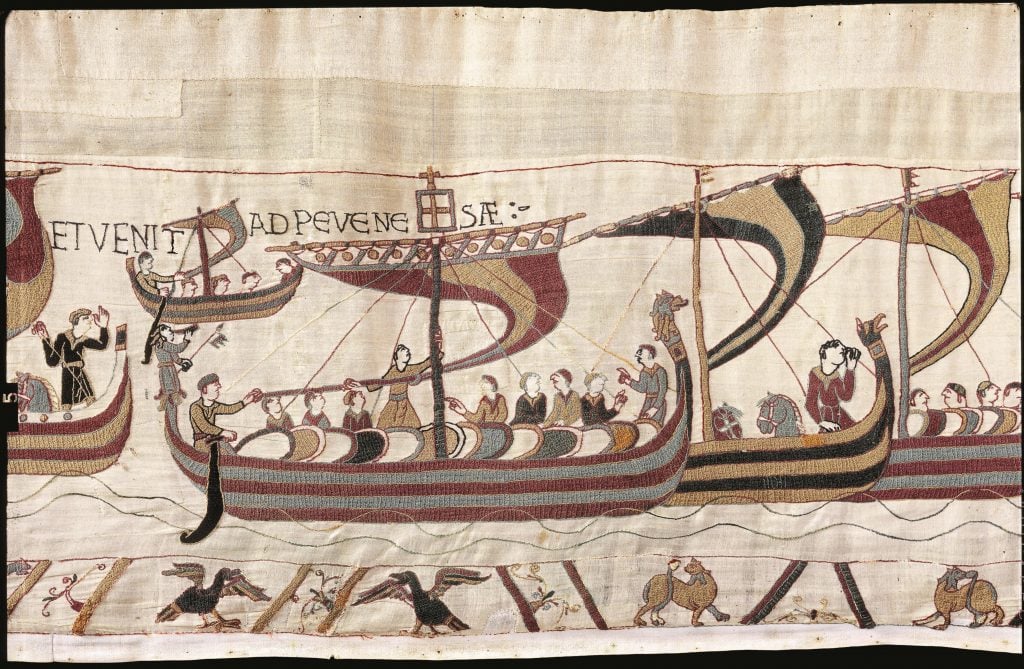
The Bayeux Tapestry. Scene 38: William and His Fleet Cross the Channel (ca. 1070). Photo: Fine Art Images/Heritage Images/Getty Images.
The Bayeux Tapestry, an extensive ca. 11th-century embroidered cloth that retold the Norman Conquest, was an obvious inspiration, but so was another woven work, the Game of Thrones tapestry. The hand-crafted fabric was first unveiled in 2017 at the Ulster Museum in Belfast, Northern Ireland, and grew with embroidered scenes as episodes of the blockbuster HBO series aired. By 2019, when the show concluded, the textile comprised eight panels and measured 90 meters, outstripping the length of the Bayeux Tapestry.
The yU+co team watched instructive videos of the embroidery process behind the Game of Thrones tapestry, while also looking at loomed works, namely the massive Apocalypse Tapestry (1377–82), which depicts events from the Book of Revelation in 90 scenes. “We were able to see the fidelity of the illustrations, the differences between an embroidered tapestry versus a loomed one,” said Leong-Suzuki of their research.
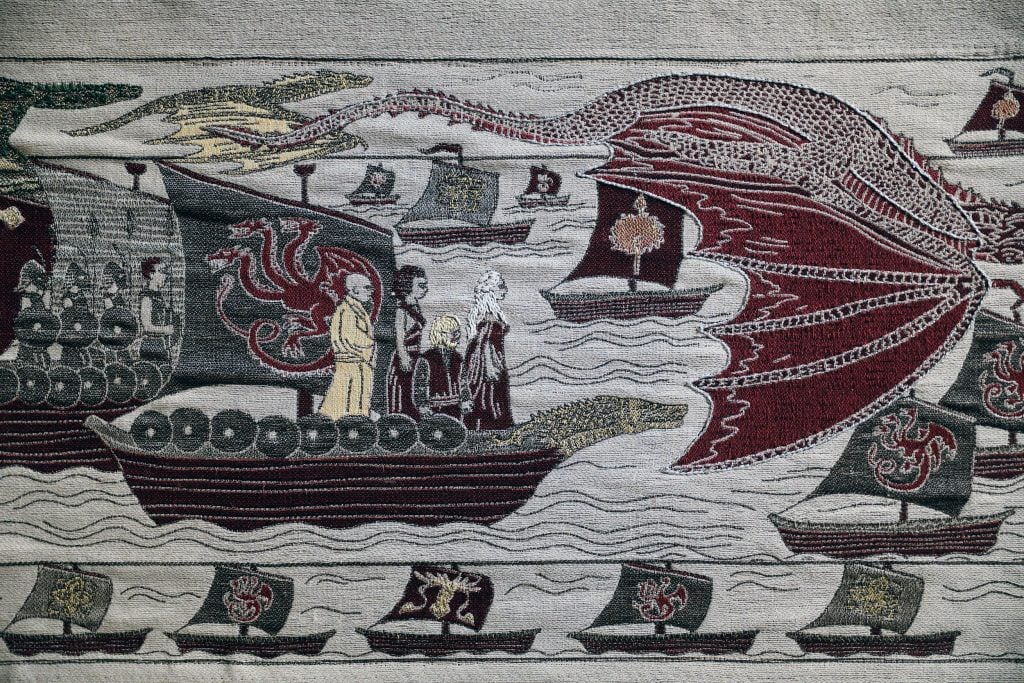
Detail of the Game of Thrones Tapestry. Photo: Philippe Lissac/Godong/Universal Images Group via Getty Images.
Scenes in the House of the Dragon tapestry were selected in consultation with the showrunners, with the design team working on multiple digital illustrations before figuring out how they could be condensed. For instance, Aegon I’s conquest, a drawn-out campaign in the books, was boiled down to a single, bloody vignette framed by two roaring dragons.
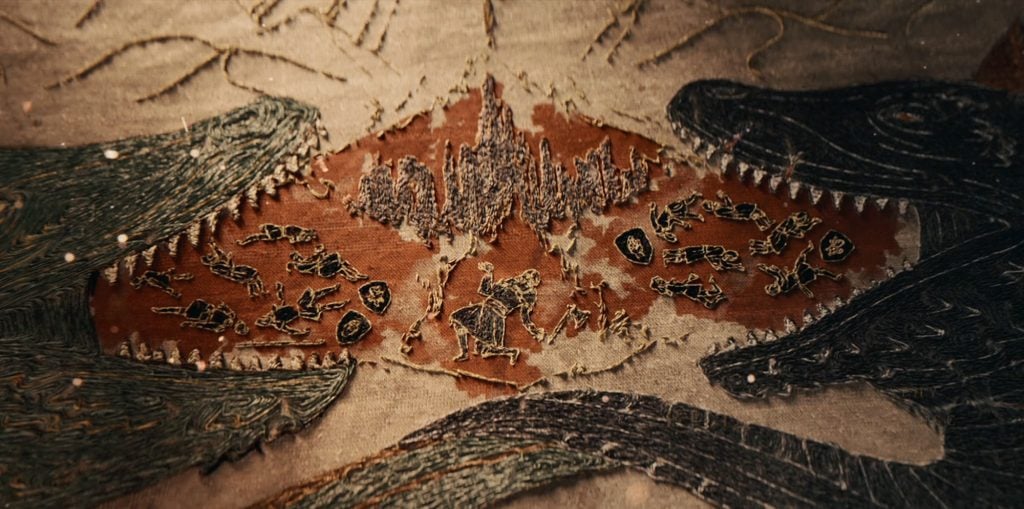
Opening credits for House of the Dragon, season two, by yU+co, depicting Aegon I’s conquest. Photo: HBO.
These digital images went not to a team of embroiderers, but to yU+co’s 3D division, led by art director James Robertson. It was Robertson’s task (or really, challenge) to transform these drawings into something that looked authentically threaded. This “threadification” of the illustrations, said Robertson, involved historical deep dives into the threading process as much as developing digital approaches.
“We would break the artwork down into thousands of little dots, each represented by the color of the illustration. That would indicate the starting point of the thread. So, you can imagine the thread sprouting out of the fabric and going back down in the loop,” he explained. “That technique of having these threads crawl across the fabric really helped make it seem authentic, rather than digital.”
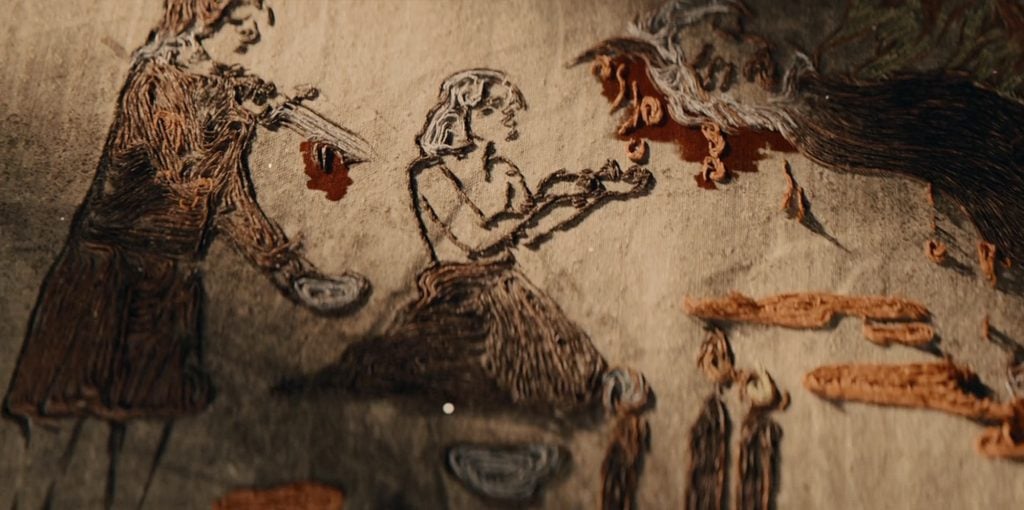
Opening credits for House of the Dragon, season two, by yU+co, depicting Azor Ahai. Photo: HBO.
Also connecting these scenes is blood or bloodlines, a central concern in House of the Dragon. The opening sequence is set in motion by a drop of blood staining the fabric before guiding us through other tableaus, spreading from the dagger of legendary hero Azor Ahai to the throne of Viserys I. (House of the Dragon credits are known to evolve and develop with each episode, but the team is remaining schtum how theirs will.)
As Garson Yu, founder of yU+co, pointed out, blood was similarly used in the titles for the first season of the series. “Ryan wanted to have that carry on,” he said. “So, we use the blood as a device to motivate the camera, to move through the story. The motion of the bloodline is part of the narrative throughout the entire sequence.”
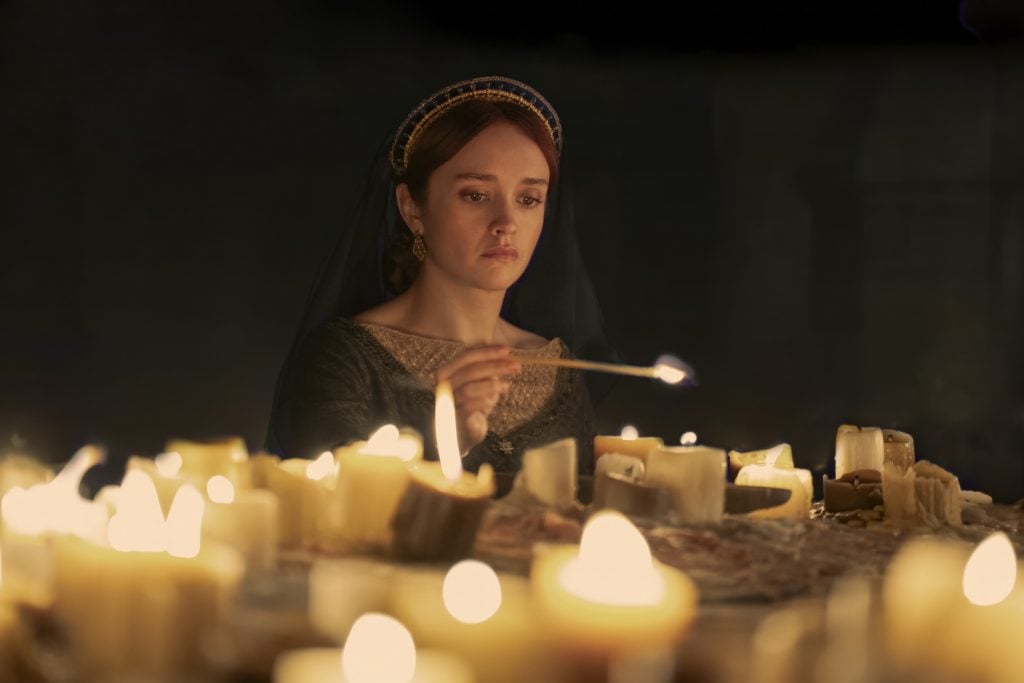
Olivia Cooke as Alicent Hightower in House of the Dragon, season two (2024). Photo: Ollie Upton/HBO.
Tapestry, too, with its attendant crafts such as sewing and embroidery, has long been deemed women’s work—a gendered line that is likewise explored in the series, in which a war is spearheaded by two women, Rhaenyra and Alicent, against a patriarchal backdrop. It is also women, Leong-Suzuki noted, that created the bloodline that runs through the opening credits.
She added that while the textile does represent feminine craft, it further serves as a historical record, however skewed toward the victors. The Bayeux Tapestry, for example, was likely commissioned by a relative of William the Conqueror, who triumphed in the Battle of Hastings.
“It’s an interpretation of an interpretation,” she said of the tapestry, highlighting that Martin’s book, Fire and Blood, similarly positions itself as a historical document with its shifting perspectives and murky retelling. “This idea of how history is written by others, we’re able to see that with the tapestry.”





